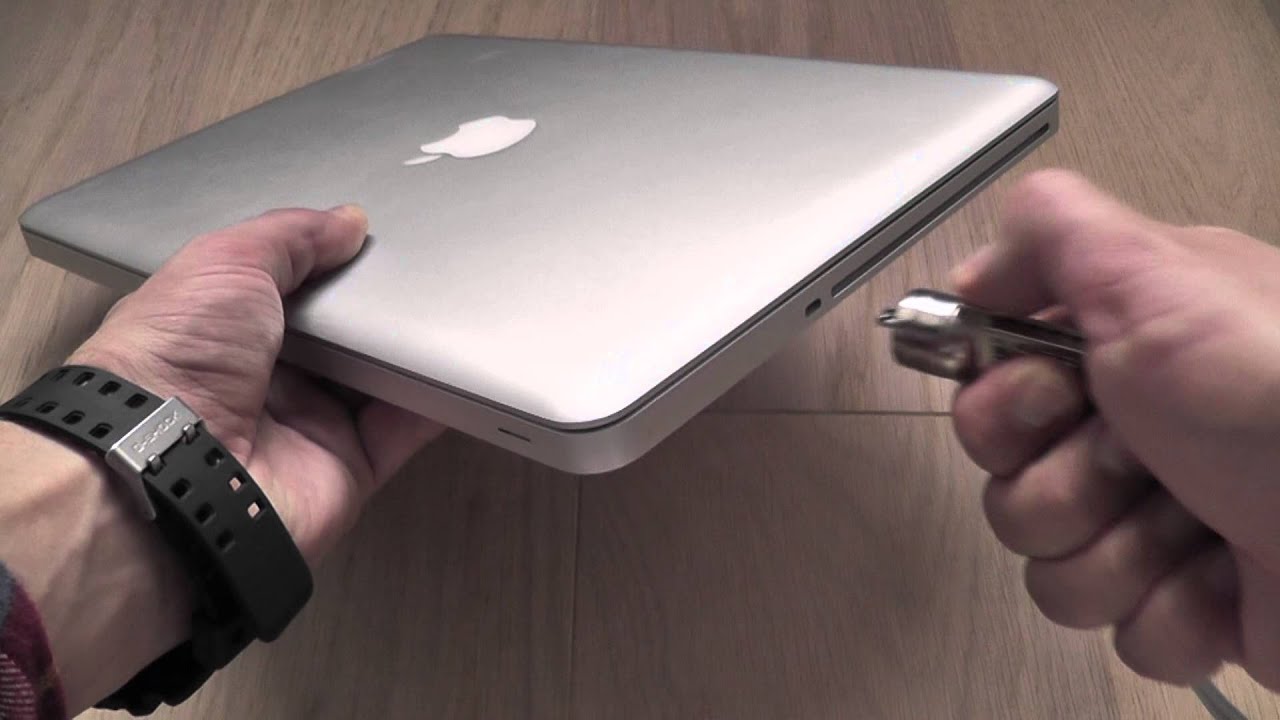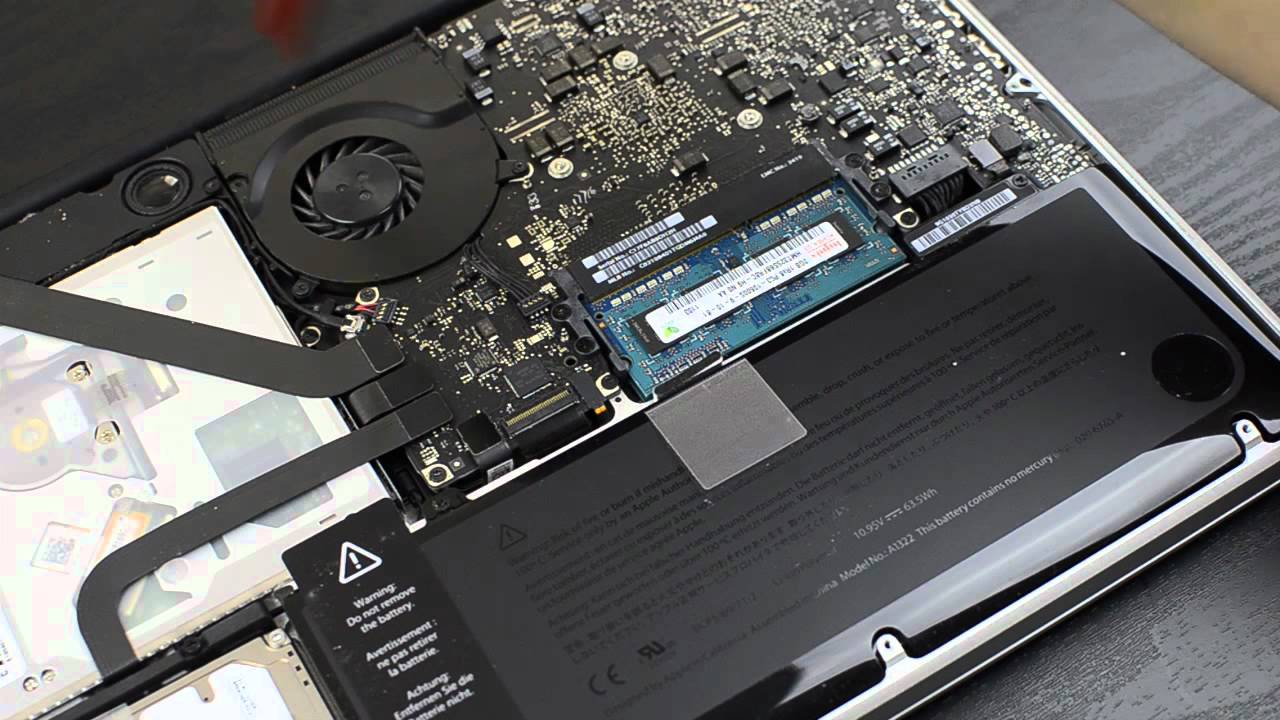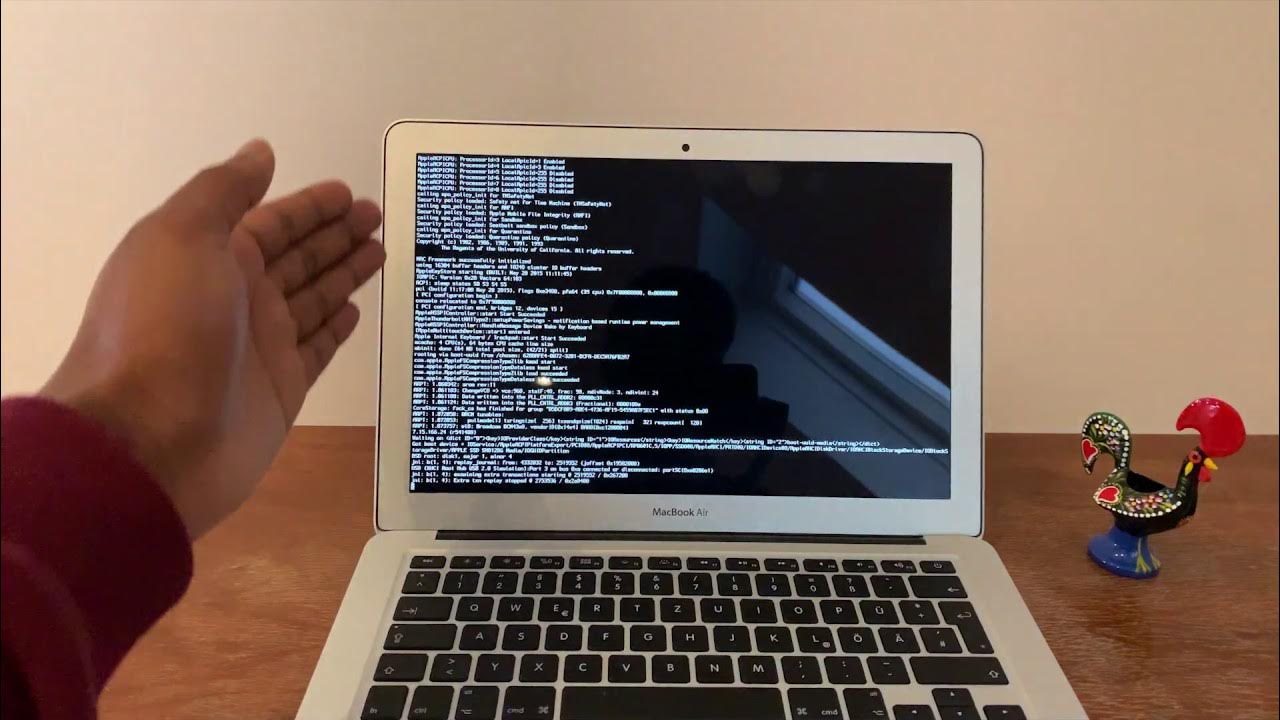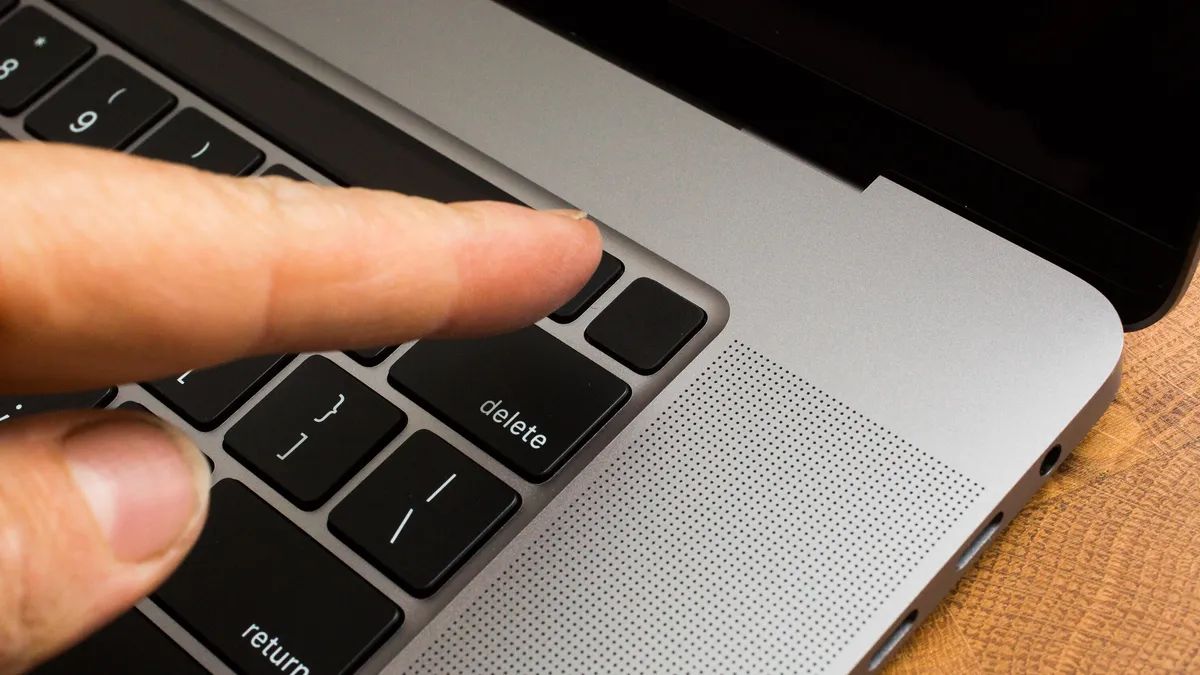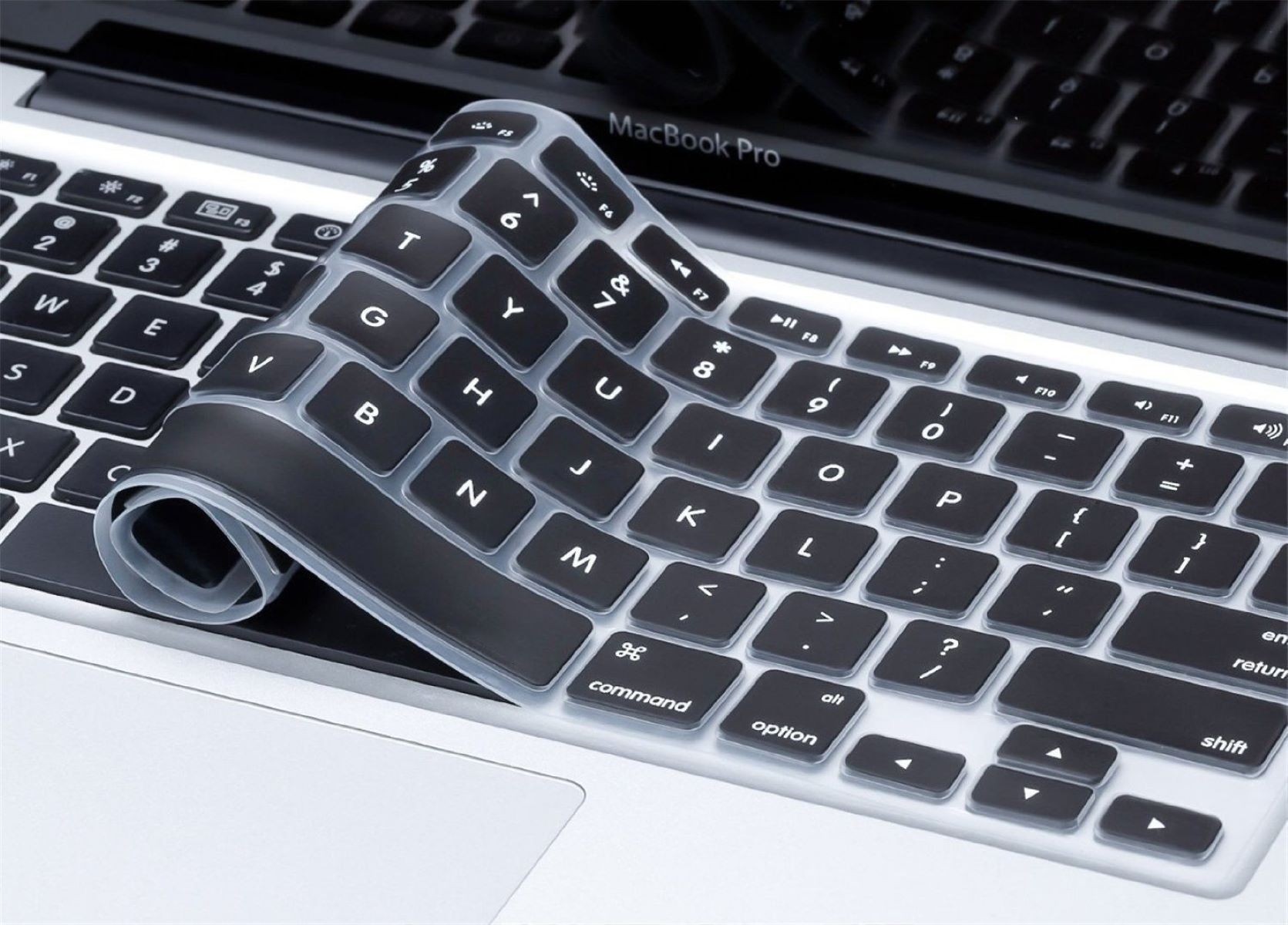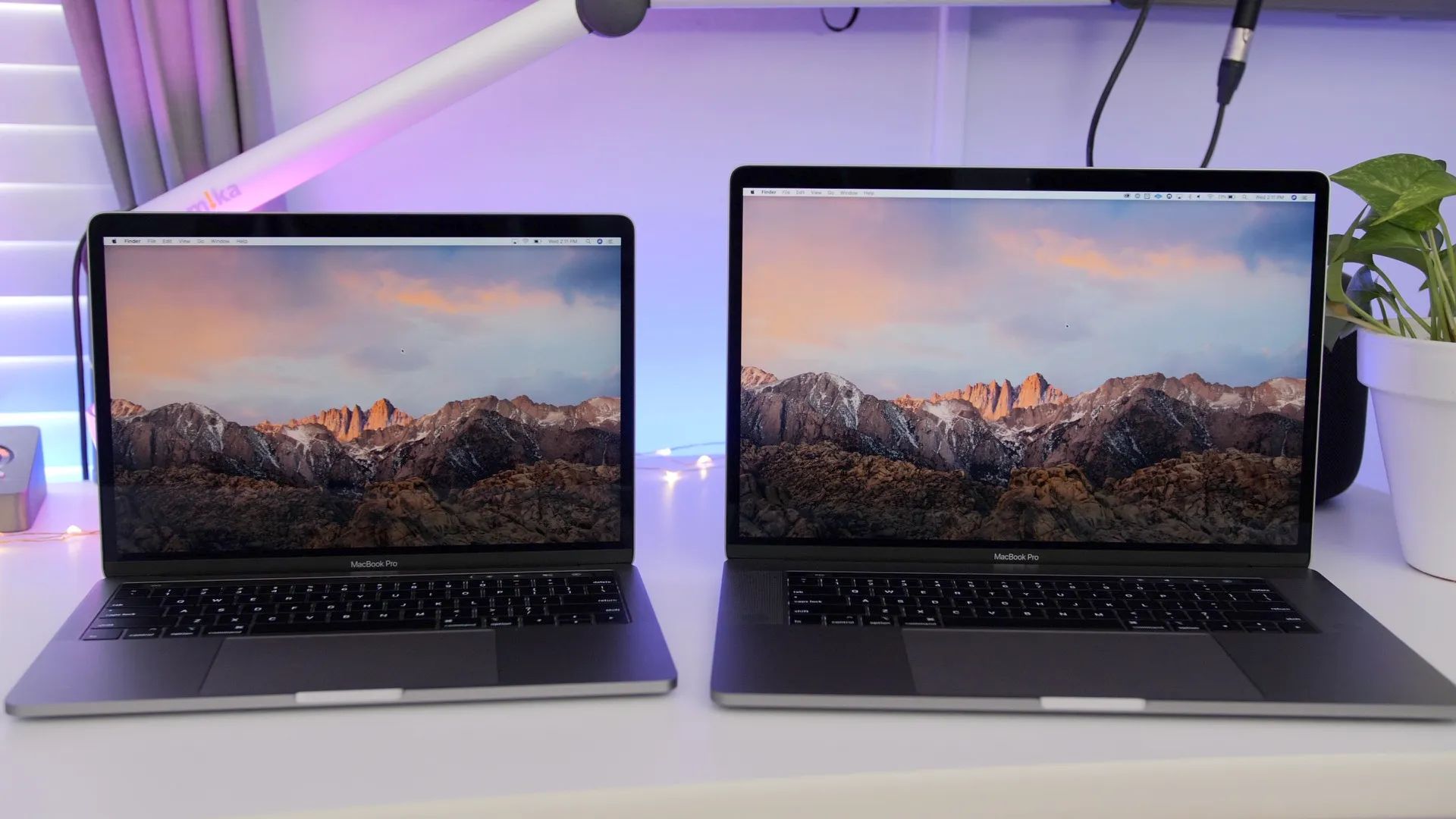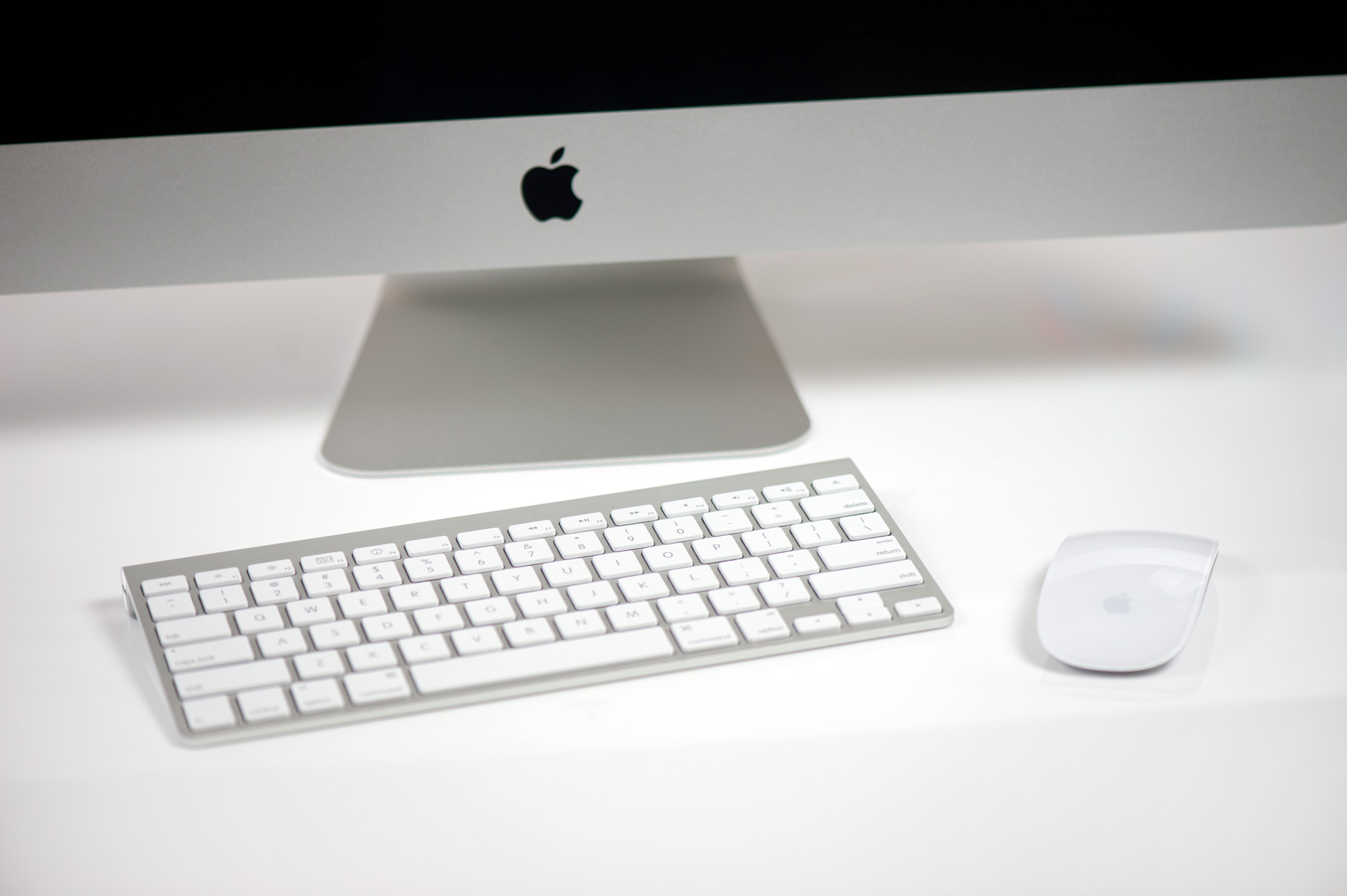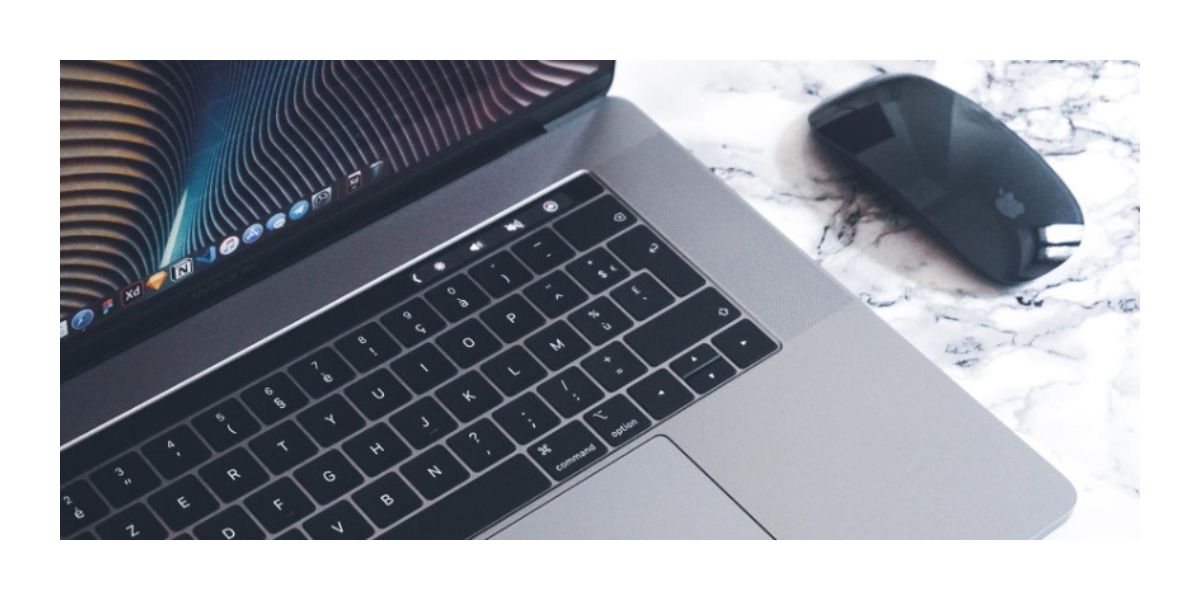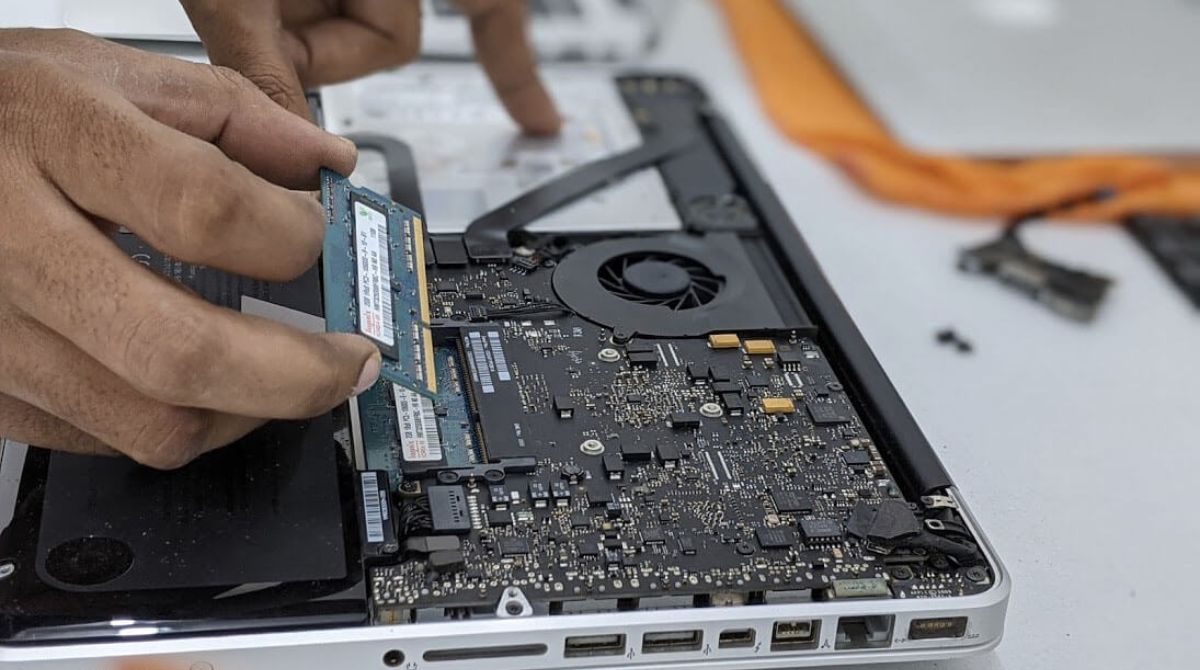Introduction
Welcome to our guide on how to lock your MacBook Pro and keep your personal data secure. Your MacBook Pro contains a wealth of personal and sensitive information, making it crucial to take the necessary steps to protect it from unauthorized access. Whether you use your MacBook Pro for work, school, or personal use, implementing security measures is essential to safeguarding your valuable data.
Locking your MacBook Pro not only prevents unauthorized users from accessing your files, but it also acts as a deterrent, discouraging theft and ensuring the privacy of your information. In this guide, we will walk you through a series of steps to strengthen the security of your MacBook Pro, providing you with peace of mind knowing that your device is protected.
From setting up a strong password to utilizing additional security features such as Two-Factor Authentication, we will cover all the necessary aspects to keep your MacBook Pro safe. You will also learn how to enable FileVault, a robust encryption tool that adds an extra layer of protection by encrypting your files and preventing unauthorized access, even if your MacBook Pro falls into the wrong hands.
We will also explore how to enable Find My Mac, a feature that allows you to track, lock, and erase your MacBook Pro remotely in case it is lost or stolen. Additionally, we will discuss the importance of setting up a screensaver password and utilizing the Hot Corners feature, both of which add an additional barrier to unauthorized access when your MacBook Pro is idle.
Lastly, we will suggest installing a reliable third-party security software to further enhance your MacBook Pro’s defense against malware and other threats. With the combination of these security measures, you can rest assured that your MacBook Pro is protected from both physical theft and digital breaches.
Now that you have a glimpse of what’s ahead, let’s dive into the step-by-step process of locking your MacBook Pro and fortifying its security. By the end of this guide, you will have the necessary knowledge and tools to secure your MacBook Pro and protect your valuable data.
Step 1: Set up a Strong Password
The first and most basic step in securing your MacBook Pro is setting up a strong password. A strong password is essential because it acts as the initial defense against unauthorized access to your device and data. Here are some tips to create a strong password:
- Length: Choose a password that is at least 8 characters long. Ideally, aim for a password that is 12-15 characters long to provide even better security.
- Complexity: Use a combination of uppercase and lowercase letters, numbers, and special characters. Avoid using easily guessable information like your name, birthdate, or common dictionary words.
- Avoid Dictionary Words: Hackers often use sophisticated software that can quickly guess common dictionary words. Instead, use a combination of random words or consider using a passphrase that you can easily remember.
- Unique: Do not reuse passwords. Each of your accounts, including your MacBook Pro, should have a unique password to prevent one compromised account from affecting others.
- Frequent Updates: Update your password regularly to maintain security. Consider changing your password every 90 days or more frequently if you suspect any security breaches.
Once you have chosen a strong password, follow these steps to set it up on your MacBook Pro:
- Click on the Apple menu in the top-left corner of the screen and select “System Preferences”.
- In the System Preferences window, click on “Users & Groups”.
- Select your user account from the list on the left-hand side.
- Click on the “Change Password” button.
- Enter your current password, followed by your new password. Make sure that your new password meets the criteria for a strong password that we discussed earlier.
- Confirm your new password.
- Finally, click on the “Change Password” button to confirm and update your password.
With a strong password in place, you have already taken a significant step towards securing your MacBook Pro. However, there are additional security measures that you can implement to further enhance the safety of your device. Let’s move on to the next step: enabling FileVault.
Step 2: Enable FileVault
FileVault is a built-in encryption feature on your MacBook Pro that helps protect your data by encrypting the contents of your disk. Enabling FileVault adds an extra layer of security, ensuring that even if someone gains physical access to your MacBook Pro, they won’t be able to access or retrieve your files without the encryption key. Follow these steps to enable FileVault on your MacBook Pro:
- Click on the Apple menu in the top-left corner of the screen and select “System Preferences”.
- In the System Preferences window, click on “Security & Privacy”.
- Click on the “FileVault” tab at the top of the window.
- Click on the padlock icon in the bottom-left corner and enter your administrator password to make changes.
- Click on the “Turn On FileVault” button.
- Choose if you want to let your iCloud account be used to unlock your disk and reset your password. This step is optional but recommended for added convenience in case you forget your password.
- Choose if you want to enable your Apple ID to unlock your disk in case you forget your password. This step is also optional but adds another layer of protection.
- Click on the “Enable Users” button to proceed.
- If you have other user accounts on your MacBook Pro, you will have the option to enable FileVault for those accounts as well. Choose the appropriate options and click on “Continue”.
- Follow the prompts to enable FileVault. Your MacBook Pro will restart, and the encryption process will begin.
- Once the encryption process is complete, your data will be protected by FileVault.
It’s important to note that enabling FileVault may slightly impact the performance of your MacBook Pro, especially during the initial encryption process and when accessing encrypted files. However, the added security of encrypting your sensitive data outweighs any minor inconvenience it may cause.
With FileVault enabled, your data is encrypted and secure, even if your MacBook Pro is lost, stolen, or accessed by unauthorized individuals. In the next step, we will explore how to enable the Find My Mac feature to track and protect your device remotely. Let’s move ahead and make your MacBook Pro even more secure!
Step 3: Enable Find My Mac
Enabling the “Find My Mac” feature on your MacBook Pro is crucial in case your device gets lost or stolen. This feature allows you to track the location of your MacBook Pro, lock it remotely, and even erase its contents to protect your data. To enable Find My Mac, follow these steps:
- Click on the Apple menu in the top-left corner of the screen and select “System Preferences”.
- In the System Preferences window, click on “Apple ID”.
- Make sure you are logged in with your Apple ID. If not, sign in with your Apple ID credentials.
- In the left sidebar, click on “iCloud”.
- Scroll down and locate “Find My Mac”. Check the box next to it to enable the feature.
- You might be prompted to allow location services. Select “Allow” if you want to use the full functionality of Find My Mac.
Once you have enabled Find My Mac, you can use the feature in a few different ways:
- Track Your MacBook Pro: To locate your MacBook Pro, go to iCloud.com and log in using your Apple ID credentials. From there, you can access the Find My iPhone/Find My Mac feature and view the location of your device on a map.
- Lock Your MacBook Pro: If your MacBook Pro is lost or stolen, you can remotely lock it to prevent unauthorized access to your data. On iCloud.com, select your MacBook Pro from the list of devices and click on the “Lost Mode” option. You can then set a custom message to display on the lock screen, along with a contact number in case someone finds your device.
- Erase Your MacBook Pro: In extreme cases where you believe your MacBook Pro cannot be recovered, you have the option to remotely erase all the data on your device. However, keep in mind that once you initiate the erase, it cannot be undone. To perform a remote erase, select your MacBook Pro on iCloud.com and click on the “Erase Mac” option.
Enabling Find My Mac provides an additional layer of security for your MacBook Pro. In case of loss or theft, you have the tools to locate, lock, or erase your device to protect your sensitive information. In the next step, we will discuss setting up a screensaver password to keep your MacBook Pro secure when it is idle. Let’s move on to the next step!
Step 4: Set up a Screensaver Password
Setting up a screensaver password adds an extra layer of security to your MacBook Pro when it is idle or left unattended. It ensures that anyone who tries to access your device after the screensaver activates will need to enter a password to gain access. This is especially important if you often work in public spaces or share your MacBook Pro with others. Here’s how you can set up a screensaver password:
- Click on the Apple menu in the top-left corner of the screen and select “System Preferences”.
- In the System Preferences window, click on “Desktop & Screen Saver”.
- Click on the “Screen Saver” tab at the top of the window.
- Select the screensaver option that you prefer. You can choose from various options such as “Flurry”, “Shell”, or “Shifting Tiles”.
- Check the box that says “Require password” and select the timing for when the password should be prompted. You can choose immediately, a specific time interval, or when waking from sleep or screensaver.
- Close the System Preferences window, and your screensaver password will be set.
With the screensaver password enabled, your MacBook Pro will automatically lock and require a password to be entered when the screensaver activates or when you wake it up from sleep or screensaver mode. This provides an extra layer of protection against unauthorized access, even if you forget to manually lock your device.
Additionally, you can use the “Hot Corners” feature in conjunction with the screensaver password to quickly activate the screensaver and lock your MacBook Pro when needed. By assigning a specific corner of your screen to activate the screensaver, you can easily lock your device with a simple mouse movement.
Now that you have set up a screensaver password, your MacBook Pro will remain secure even when it is idle or unattended. In the next step, we will explore the Hot Corners feature and how it can further enhance the security of your device. Let’s move on!
Step 5: Use the Hot Corners Feature
The Hot Corners feature on your MacBook Pro allows you to configure specific actions when you move your cursor to one of the four corners of your screen. By utilizing Hot Corners, you can quickly activate the screensaver, lock your device, or perform other actions to enhance the security of your MacBook Pro. Here’s how to use the Hot Corners feature:
- Click on the Apple menu in the top-left corner of the screen and select “System Preferences”.
- In the System Preferences window, click on “Desktop & Screen Saver”.
- Click on the “Screen Saver” tab at the top of the window.
- In the bottom-right corner, click on the “Hot Corners…” button.
- A dialog box will appear, displaying the four corners of your screen.
- Click on the dropdown menu for the corner where you want to assign an action.
- Select the desired action from the list. For example, you can choose “Put Display to Sleep” to automatically turn off the display or “Start Screen Saver” to activate the screensaver and lock your MacBook Pro.
- Repeat the process to assign actions to any other corners if desired.
- Click “OK” to save your settings and close the dialog box.
Once you have set up the Hot Corners feature, you can now use it to quickly lock your MacBook Pro when needed. For example, you can assign the “Start Screen Saver” action to the bottom-right corner and simply move your cursor there to activate the screensaver and lock your device instantly.
The Hot Corners feature provides a convenient way to enhance the security of your MacBook Pro by allowing you to quickly take action without needing to navigate through menus. Combined with the screensaver password, you can ensure that your device remains locked and protected, even when you step away momentarily.
In the next step, we will discuss the option of installing a third-party security software to further enhance the security of your MacBook Pro. Let’s dive in!
Step 6: Install a Third-Party Security Software
While the built-in security features of your MacBook Pro provide a solid foundation for protecting your device and data, installing a third-party security software can offer additional layers of defense against malware, viruses, and other online threats. These tools can help detect and neutralize potential risks, keeping your MacBook Pro secure. Here’s how you can install a third-party security software:
- Research and choose a reputable security software provider. Look for well-known names in the industry with positive reviews and a track record of reliability.
- Visit the official website of the security software provider and navigate to the section specifically designed for Mac users.
- Review the available security software options and compare their features, pricing, and user ratings to determine the best fit for your needs.
- Select the desired security software product and proceed with the purchase or download, depending on the provider’s requirements.
- Follow the installation prompts provided by the security software provider. Typically, this involves downloading an installation package and running it on your MacBook Pro.
- Once the installation is complete, launch the security software and familiarize yourself with its user interface and settings.
- Configure the security software according to your preferences. This may include adjusting the scanning frequency, enabling real-time protection, setting up scheduled scans, and customizing any other available settings.
- Ensure that the security software is kept up to date by enabling automatic updates. This helps protect against newly-discovered threats and vulnerabilities.
- Regularly perform scans using the security software to detect and remove any potential threats that may have infiltrated your MacBook Pro.
- Stay informed about the latest security best practices and keep an eye on any updates or notifications from the security software provider.
By installing a trusted third-party security software, you are adding an extra layer of protection to your MacBook Pro. The software will complement the existing security features and provide ongoing monitoring and defense against the ever-evolving landscape of online threats.
It’s important to note that while third-party security software is valuable, make sure not to install multiple conflicting security products, as they can impact system performance and interfere with each other. Stick to a reliable and trustworthy security solution that covers all your needs.
Now that you have installed a third-party security software, your MacBook Pro is fortified with additional protection against malware and other potential threats. In the next step, we will explore the option of enabling Two-Factor Authentication (2FA) for your Apple ID. Let’s move on!
Step 7: Enable Two-Factor Authentication
To provide an extra layer of security for your Apple ID, enabling Two-Factor Authentication (2FA) is highly recommended. With 2FA, you will add an additional step to the login process, requiring verification from a trusted device or phone number alongside your password. This ensures that even if someone obtains your password, they won’t be able to access your Apple ID without the second form of authentication. Here’s how to enable Two-Factor Authentication:
- Go to the Apple ID website: https://appleid.apple.com/ and sign in with your account credentials.
- In the Security section, locate the “Two-Factor Authentication” option and click on “Get Started”.
- Follow the on-screen prompts to set up Two-Factor Authentication. This usually involves verifying your trusted phone number, setting up a recovery key, and confirming your identity.
- Choose a trusted device, such as your iPhone or iPad, to receive verification codes when logging in from new devices or browsers.
- Verify your trusted device by entering the verification code received on that device.
- Once the setup process is complete, Two-Factor Authentication will be enabled for your Apple ID.
With Two-Factor Authentication enabled, whenever you sign in to your Apple ID, a verification code will be sent to your trusted device. You must enter this code along with your password to gain access. This extra layer of protection ensures that even if someone manages to acquire your password, they won’t be able to log in to your Apple ID without the verification code from your trusted device.
Two-Factor Authentication offers a significant improvement in the security of your Apple ID and all associated services, including iCloud, the App Store, and Apple Music. It is an essential safeguard against unauthorized access and ensures that your personal information and data remain secure.
With Two-Factor Authentication enabled, you have successfully taken the necessary steps to secure your Apple ID. Your MacBook Pro’s security is further enhanced, as your Apple ID is closely linked to it. Congratulations on fortifying your device against potential threats!
Now that you have completed all the steps outlined in this guide, your MacBook Pro is well protected, significantly reducing the risk of unauthorized access, data breaches, and other security incidents. By implementing strong passwords, enabling FileVault, setting up Find My Mac, configuring a screensaver password, utilizing Hot Corners, installing security software, and enabling Two-Factor Authentication, you have taken crucial measures to keep your MacBook Pro secure.
Remember to stay vigilant and keep your software up to date, as new security threats may emerge over time. By following best practices and being proactive, you can continue to enjoy a secure computing experience on your MacBook Pro.
Conclusion
Congratulations on taking the necessary steps to lock your MacBook Pro and secure your personal data. By implementing strong passwords, enabling FileVault, setting up Find My Mac, configuring a screensaver password, utilizing Hot Corners, installing security software, and enabling Two-Factor Authentication, you have significantly enhanced the security of your device against potential threats.
Remember, the protection of your MacBook Pro goes beyond physical theft and involves safeguarding your data from digital breaches. Each security measure you have implemented adds an additional layer of defense, ensuring that unauthorized users cannot access your personal information.
Setting up a strong password is the foundation of your MacBook Pro’s security. Combine uppercase and lowercase letters, numbers, and special characters to create a password that is difficult to crack. Enabling FileVault provides encryption for your files, making it nearly impossible for unauthorized individuals to access your data even if they physically possess your MacBook Pro.
Find My Mac is a valuable feature that allows you to track, lock, and erase your device remotely in case it is lost or stolen. With a screensaver password and the Hot Corners feature, your MacBook Pro automatically locks when you’re not actively using it, adding an extra layer of protection.
Installing third-party security software offers additional defense against malware and other online threats. Make sure to choose a reputable provider and keep the software up to date to ensure optimal protection.
Enabling Two-Factor Authentication adds an extra level of security for your Apple ID, preventing unauthorized access and ensuring the safety of your account and associated services.
By following these steps and implementing these security measures, you have taken significant steps towards protecting your MacBook Pro and the personal data it contains. Regularly review and update your security settings, stay informed about the latest security developments, and practice general online safety precautions to keep your device and information secure.
Now that you have a well-protected MacBook Pro, you can confidently use your device for work, school, or personal purposes, knowing that you have taken the necessary precautions to protect your valuable data.







